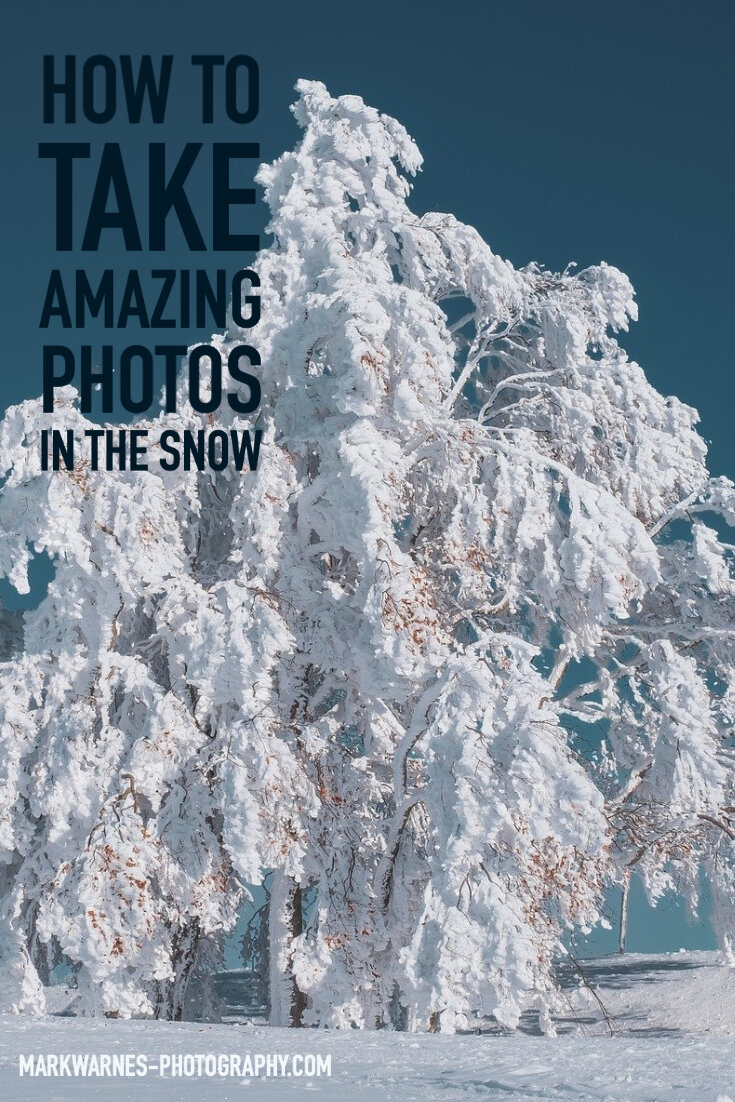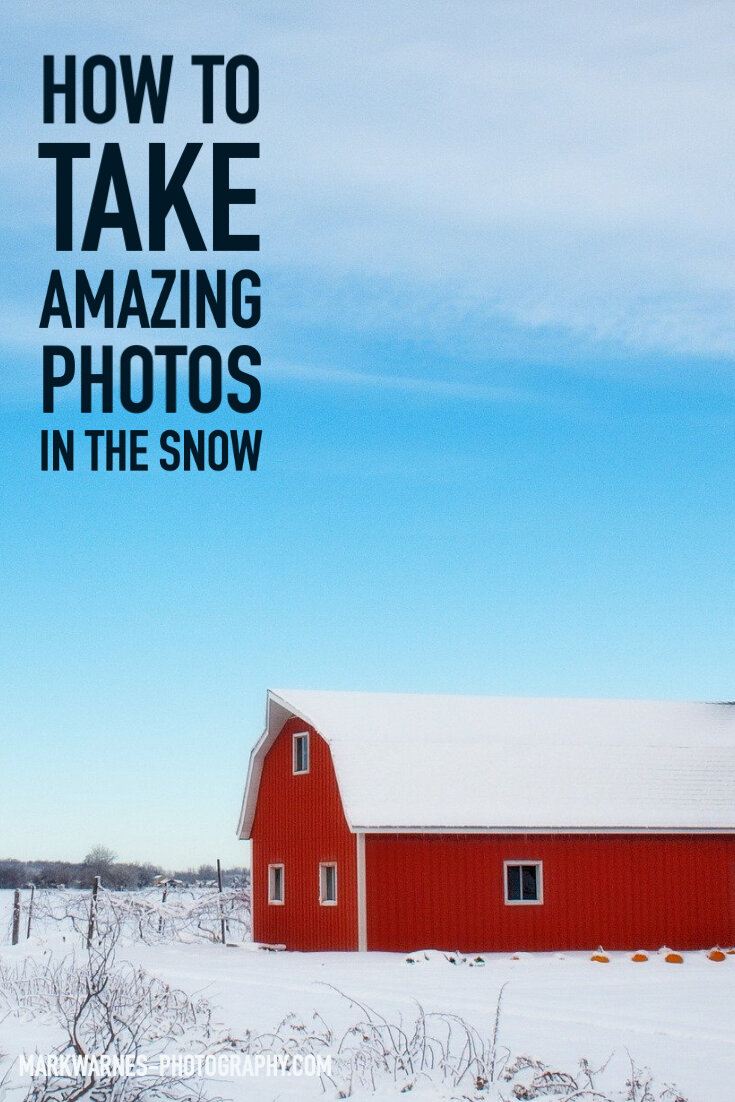How To Take Stunning Photos In The Snow
With winter underway and snow forecast I look at some tips to help you take stunning snowy pictures and move past those photos with grey sb=now and a blueish tint.
Camera Settings
Use Exposure Compensation at +1 or over .
For snow photography, your camera will struggle to get the light correct. It will try to capture the white areas as a grey, so it can work in keeping detail.
By setting your exposure compensation to +1 or +2, it will help the snow stay white. This may overexpose your light and highlight areas, but this can then be removed when editing.
Check you Metering Mode
Metering is how your camera determines the correct shutter speed and aperture based on the amount of light that goes into the camera. Most DSLRs are automatically set in matrix metering or evaluative metering mode, which divides the camera into zones to determine the correct exposure. In the snow, you don’t want to leave your camera in this mode because it will average the image and expose for grey. Instead, try spot metering the brightest part of the snow.Shoot in Raw
Shoot in RAW
Shoot you photos in RAW rather than Jpeg-this will give you more flexibility in post processing and will allow you to alter the exposure and white balance of the photo
White Balance
White balance is very important when it comes to winter photography. When photographing snow, the light tends to read towards the blueish side of the colour spectrum giving your photos a blueish tint. Avoid Auto white balance and try one of the other settings depending on the light.
Expose to the Right
You will need to exposure to the right with snow photos to ensure crisp white snow. Check the histogram for areas of overexposure.
Look After Your Gear
Use a sealable Bag
If you’re using your camera in particularly cold weather, you’re going to want a bag (or bags) that you can fit your camera gear (i.e., camera body, lenses) in that has an airtight seal – my recommendation would be something like a fabric dry bag (as sold for kayaking etc.) or a Ziplock plastic bag.
The reason for this is that when you move from somewhere very cold to somewhere warmer, such as outside to your vehicle or hotel room, there is the risk that moisture will condense on or inside your equipment. Moisture does not play well with the internals of most cameras, and protecting your camera from it is important.
To stop this happening, before you head inside , seal your camera equipment inside the bag along with some of that cold winter air. You can remove the battery and memory card before putting it in the bag if you want so you can begin importing your photos and recharging your batteries. Then you can take your camera inside, leaving it inside the sealed bag, and it will warm a little more slowly with none of the moisture able to penetrate the bag.
Take Spare Batteries
Cold weather kills batteries. Fact The cold causes batteries to drain faster than normal inside the camera, and even when not in use, they’ll still lose their charge.
Bring lots of batteries-I have 4 per camera for a full day shooting.
You will also need to keep those spare batteries warm. Keep them in an inside pocket close to your body rather than in a rucksack, or better still there is a company called ColdCaseGear that make specialised insulated pouches suitable for batteries, phones etc.
Wear Good Gloves
One of the big challenges of cold weather photography is just trying to use the camera in those sub zero temperatures. Dials, buttons, filters – all these things that are easy to deal with when shooting in normal conditions, all become very challenging when we’re wrapped up to the max.
There are a variety of gloves designed for winter photography and cold weather conditions, which vary in their approach, from fingerless solutions to gloves with removable sections. In my experience, really cold conditions tend to need bulkier glovers, so make sure you pick the pair that will suit the conditions you’ll be shooting in.
I’d suggest using a thin merino wool or silk underglove and then find a pair of gloves that has detachable fingers so buttons and dials can be adjusted quickly.
I use a Vallerret Market Pro and merino wool lining glove.
There are of course a number of other options on the market.
Wear Warm Winter Clothes
If you’re out in cold weather, you want to be wearing clothes designed for cold weather.
The key here is layering, from thermals, overshirt, mid layer and outer layer.
I’d suggest merino wool or silk thermals, a merino wool hoodie, overshirt, and down outer layer with the addition of an overcoat or parka for the extremes
Avoid cotton if you can, as if it gets wet from either rain or snow or if you are sweating you’ll get cold very quickly and stay very cold.
Don’t forget a hat, a merino beanie perhaps, along with scarf or Buff neck tube and snow boots.
Use a Good Camera Bag
This isn’t just a cold weather photography tip, but when you’re out in extreme conditions, a good camera bag is a must. It will protect your gear until you’re ready to use it. You want something that is purpose designed to be a camera bag, as it will have the necessary amount of padding to protect your gear.
You also want a bag that offers some level of protection against the elements. When it’s cold, this is usually snow, which will brush off, but a bag with a waterproof cover is a good investment nonetheless.
For me its Tenba bags all day long-functional and bullet proof-I use a Tenba Roadie for travelling and a Shootout backpack.
Lastly..
Be aware of your footprints.
As you’re walking through the snow, keep in mind your intended shot. Be careful that you do not walk through an area that you hope to include in a future shot…unless footprints are the intended purpose.
If you have found this blog useful why not check out my website or some of my other winter blogs such as A photographers guide to Yellowstone Winter Wildlife , Winter Photography Tips or Top tips for extreme cold weather photography











